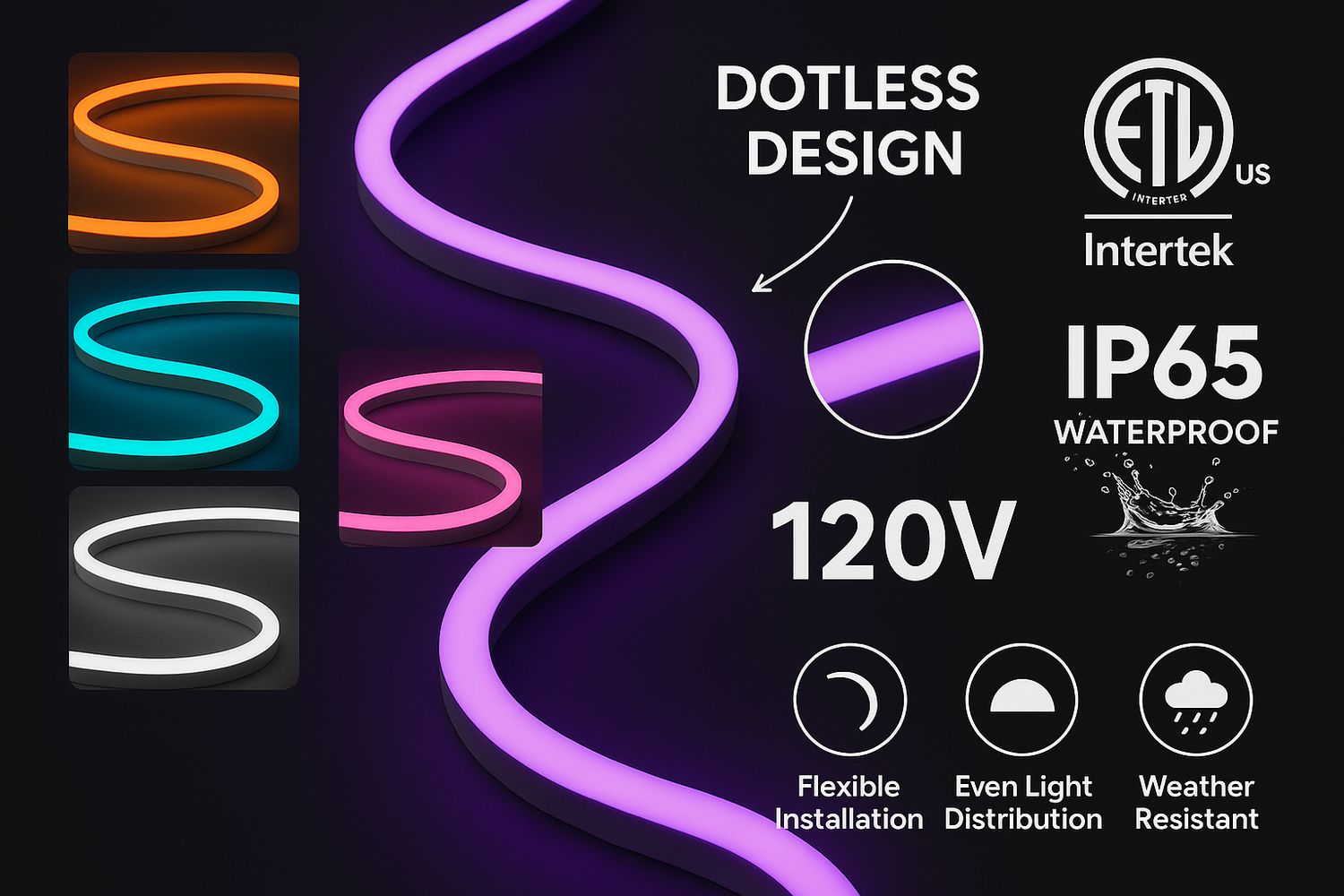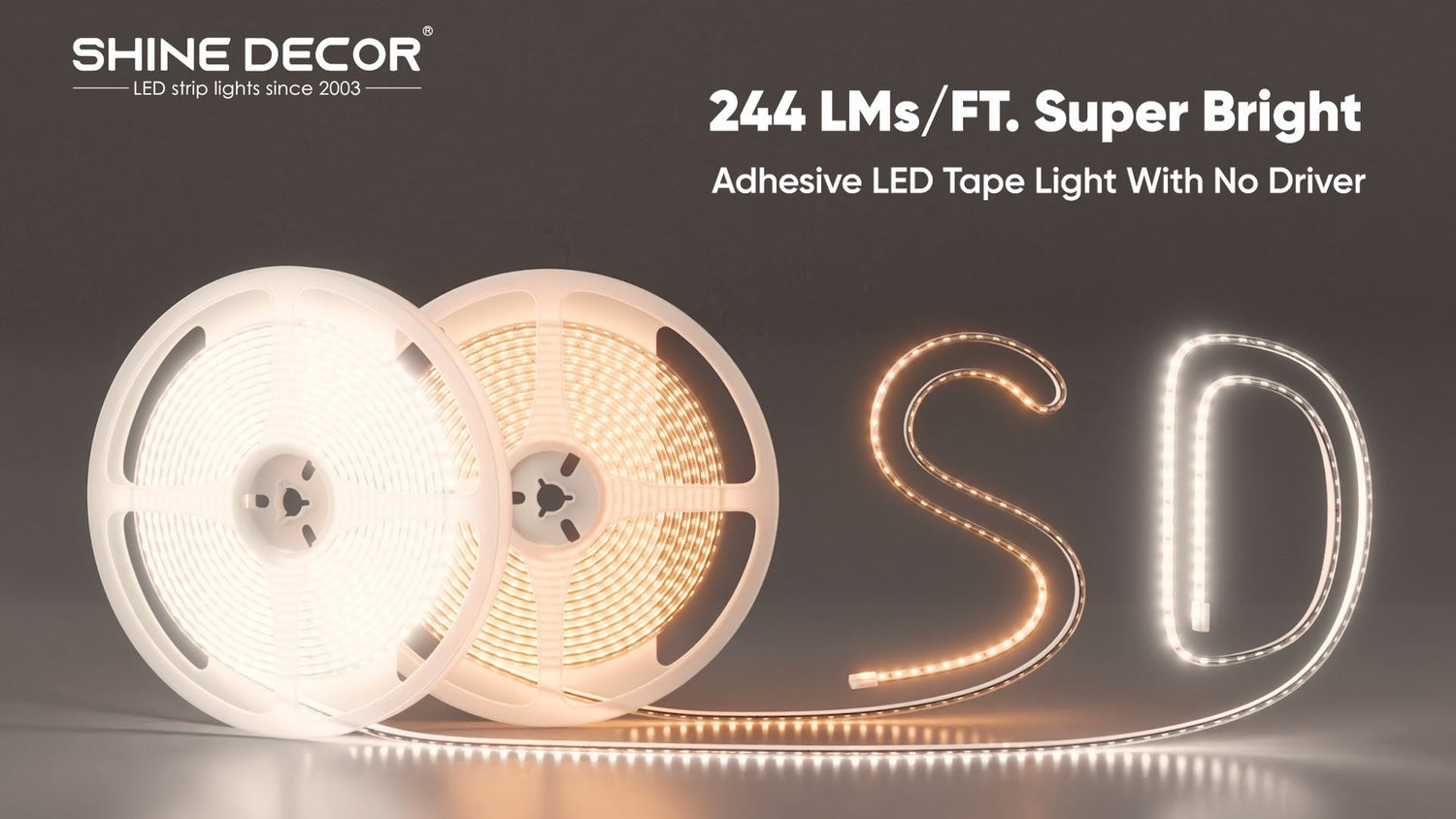
Understanding Power Consumption of LED Neon Rope Lights
Aktie
1. What Are LED Neon Rope Lights?
LED neon rope lights are a modern lighting solution that mimics the appearance of traditional neon signs but uses energy-efficient LED technology. They're flexible, safe, and available in a variety of colors and styles, making them perfect for home decor, commercial signage, events, and outdoor installations.

Key Features:
- Flexible PVC or Silicone Housing: Ensures durability and weather resistance.
- Dot-Free Illumination: Offers a smooth glow unlike LED strip lights.
- Cuttable and Extendable: Easily customizable for various lengths and shapes.

2. How LED Technology Works?
Light Emitting Diodes (LEDs) produce light through electroluminescence—a process where a material emits light in response to an electric current. Unlike incandescent bulbs, LEDs don't rely on heat to generate light, which drastically improves energy efficiency.
3. Power Consumption Explained
To understand power usage, you’ll often see terms like watts (W), voltage (V), and current (A). Here's a quick breakdown:
- Watt (W): Measures power consumption.
- Voltage (V): The pressure pushing the current.
- Ampere (A): The flow rate of electricity.
The basic formula is:
Watts = Volts × Amps
So if your LED neon rope light runs on 12V and uses 2 amps:
12V × 2A = 24W
4. Comparing Power Usage: LED Neon vs. Traditional Neon
| Type | Power Usage | Heat Emission | Lifespan |
|---|---|---|---|
| Traditional Neon | High (15-20W/ft) | High | 5,000–15,000 hrs |
| LED Neon Rope Light | Low (4-8W/ft) | Minimal | 30,000–50,000 hrs |
LED neon is the clear winner in terms of both efficiency and safety.

5. Factors Affecting LED Neon Rope Light Power Consumption
LED Chip Quality
Top-tier chips from brands like Cree or Nichia are more efficient and produce better brightness per watt.
Voltage Drop Over Distance
Longer rope runs can cause a voltage drop, dimming the lights. This means more power is used inefficiently if not planned correctly.
Other Factors Include:
- Brightness Levels: Higher lumen output consumes more watts.
- Controller Settings: Some modes, like flashing or chasing, can draw more power.
- Color Choice: Cool white may consume slightly less power than RGB models.

Typical Power Ratings of LED Neon Rope Lights
- 12V systems: Typically 4–6 watts per meter.
- 24V systems: Often more efficient over longer distances, using 5–8 watts per meter.
- 120V systems: Often more efficient over longer distances, more than 32ft, using 6-10 watts per meter.
Always check the product specs for accurate consumption data.
6. How to Calculate Your LED Neon Rope Light Power Needs
Let’s say you have:
- 10 meters of rope light
- Rated at 6W/m
Total Power = 10m × 6W = 60W
Always add a 20-25% buffer when selecting your power supply: 60W × 1.25 = 75W power supply recommended

7. Choosing the Right Power Supply
Constant Voltage vs. Constant Current
Most LED neon ropes work best with constant voltage power supplies (12V or 24V,120V). Using the wrong type can lead to overheating or flickering.
Safety Margin
Always pick a driver that can handle 20-25% more than the total wattage of your rope lights.
8. Energy Efficiency Tips for LED Neon Rope Lights
- Use Dimmers: Reduce brightness when full power isn’t needed.
- Install Smart Timers: Automatically shut off lights during the day.
- Zone Lighting: Light up only specific areas at a time.

9. LED Neon Rope Light Installation Best Practices
- Avoid Sharp Bends: Prevents internal wire damage.
- Use Aluminum Channels: They help with heat dissipation.
- Secure properly: Sagging can cause strain and wear.
10. Real-Life Power Usage Scenarios
- Home Decor (10m): ~60W
- Storefront Signs (20m): ~120W
- Outdoor Garden Lighting (30m RGB): ~180W or more
Using timers and dimmers can cut monthly consumption by up to 50%.
11. Cost of Operation and ROI
Example:
60W for 6 hours/day = 360Wh = 0.36kWh/day
At $0.15/kWh → $0.05/day or $1.50/month
With a long lifespan and low maintenance, payback can be achieved within a year compared to traditional neon.
12. Environmental Impact of Using LED Rope Lights
- Lower Carbon Footprint: Uses up to 80% less energy.
- Long Lifespan: Reduces e-waste.
- No Toxic Gases: Unlike traditional neon, no mercury or argon is used.

13. Common Myths About LED Neon Rope Light Power Consumption
-
Myth: Brighter = More Power
Not always. Quality LEDs can be bright at lower wattage. -
Myth: Always On = High Bill
Smart timers solve this. LEDs cost pennies to run. -
Myth: RGB Lights Waste Power
Modern RGB LEDs are incredibly efficient.
14. Troubleshooting High Power Consumption Issues
- Check for Loose Connections
- Use Shorter Segments with Amplifiers
- Measure Power Draw with a Meter
- Avoid Overloading the Power Supply

15. Future Trends in LED Neon Lighting Efficiency
- IoT Smart Controls: App-based lighting reduces waste.
- Solar-Powered LED Neon: Great for remote locations.
- Improved chipsets: Even more lumens per watt expected.
16. Conclusion
Understanding LED neon rope light power consumption can help you save money, reduce energy use, and make smarter lighting decisions. Whether you're lighting your bedroom or designing a shopfront, Shine Decor LED neon rope lights offer a stylish and energy-efficient solution that won’t drain your power bill.

17. FAQs
1. How much electricity does LED neon rope lighting use?
Typically 4–8 watts per meter, depending on brightness and color.
2. Are LED neon rope lights cheaper to run than regular neon?
Yes, they use up to 80% less energy and last much longer.
3. Can I connect multiple LED neon ropes?
Yes, but ensure your power supply can handle the total wattage with some margin.
4. Do dimmers affect power consumption?
Absolutely! Dimming reduces energy usage proportionally.
5. Why is my LED neon rope flickering?
It could be due to an inadequate power supply, voltage drop, or poor wiring.




